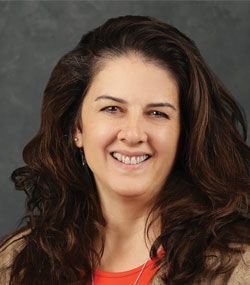
Cattle also have alternative methods of communication. They get their point across in nonverbal ways but it is not always kind. The other week, I noticed a cow lying peacefully in a stall, chewing its cud and minding its own business. Another cow came up behind and pushed the other cow with its head.
The first response was to ignore the bossy cow, but its nudges became stronger and more defined until the cow in the stall got up and backed out so the queen cow that wanted this particular space was able to lie down without a moo or bellow.
The nonverbal signals used by the bossy cow were effective, as the cow clearly got what it set out to accomplish. But it certainly is not the type of behavior that we expect out of each other. We do not encourage bullying on the farm.
In fact, we promote the opposite. There is no better way to start our day than when Duane and I walk outside and are faced with a wave and a smile from a fellow employee. A wave and a smile are some of the nicest gestures we can give each other, and that makes all the difference in someone’s day.
Many times we don’t think about how much we use hand motions to communicate to those around us. It happens so often and regularly without even a thought. Flagging someone down before they leave the farm, catching someone before they run over something with the skid loader, or giving an employee direction on where to go are just a few typical examples.
As I recently found out, there are times that is imperative to use hand gestures rather than words; hand signals work better when our words are drowned out by loud equipment.
Duane and the employees have a good system in place when they are helping each other hook up equipment. They do not need to talk; just a few hand motions and the equipment is hooked up so both parties can be on their way to the next task.
I found this firsthand when I was feeding calves. We use a pull-behind milk tank to mix and feed the milk. The majority of it is put into bottles for the calves that are in hutches, but there are times that we feed group pens with bulk milk feeders.
To do that task, we hook the utility vehicle up to the milk tank that is kept in our storage room and haul it out to the pens. I am typically not in charge of that chore but every once in a while I am the fill-in.Backing and hooking up has never been my strong point, and this area is an especially tight space. It is a good day if I back the utility vehicle into the room without hitting the building or running over tools, tanks, or anything else near by.
One day I had to back the utility vehicle into the room and hook up the milk tank so I could feed a group pen. Since I had a mishap the day before when the tank unhooked as I was driving out of the room, I decided to ask for help to make sure it was connected correctly.
Most days, I sense the employees scatter as they see me back into the room, knowing there could be a potential issue; but this day, Duane wasn’t quick enough to get away. I found him sitting in the office and roped him into helping me.
As I slowly, and I mean slowly, backed toward the tanker, I thought I was doing a good job centering the ball on the utility vehicle with the tank’s hitch. Then Duane started making hand gestures.
The first one was a chopping sign. I’m pretty sure the look on my face told him that I had no clue what he was trying to tell me.
I managed to back closer even though I was still unsure of what I was supposed to do from the chopping sign. Within a few seconds he held up his hand and clenched his fingers into a fist.
Thankfully he meant stop and not that he was getting angry with my lighthearted confusion. This time, when I pulled out of the utility room the milk tank stayed connected, and the calves were happy to be fed without delay.
I had to go back, though, and ask him to define his signs for me. After he explained everything, it all made sense. The chopping meant I was supposed to straighten the wheels. The open hand meant I was close, and the clenched fist meant that I was exactly where I needed to be.
The bottom line is, we don’t always have to talk to each other by using words. Our body language, facial expressions, gestures, and a solid push out of the freestall speak much louder than talking or mooing.
The author and her husband, Duane, own and operate a 550-cow dairy in Cochranville, Pa.










